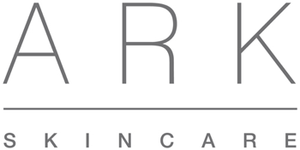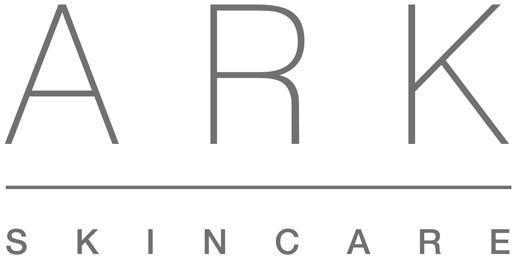Blog
Why Your Acne Routine Is Making You Break Out More
Jun 23, 2025Acne skincare routines are traditionally used by people hoping to clear up their skin.
In some instances, these routines can make these breakouts far worse.
People with acne-prone skin need to be aware of the common mistakes in their routines that lead to more breakouts and actionable steps to prevent them from happening.
The Acne Paradox
Treating acne can sometimes be worse for the skin; this is mainly dependent on how the skin reacts to active ingredients and changes in routine. This is a key difference between an effective routine and one that sabotages the skin.
Sometimes the treatments can be harsh and cause dryness, redness, or peeling, which can overwhelm the skin and disrupt the barrier, which can increase sensitivity and inflammation.
For treatment suitable for your skin type, it is best to seek out the assistance of a professional skin specialist to provide a treatment tailored to your specific needs.
There is also the concern that incorrect product use, environmental, lifestyle factors, and immune responses can affect the skin and the way treatments react to the skin.
Common Mistakes that Worsen Acne
In order to treat the skin effectively, the root cause needs to be identified and corrected as soon as possible.
Switching products too often
Changing treatment products too often can irritate the skin and disrupt the natural balance. Ideally, the skin needs about 6 to 8 weeks to adjust to a new treatment and discern if it works effectively or not.
Products with harsh or active ingredients can make the skin more vulnerable to breakouts, dryness, and inflammation, all of which can worsen acne.
Before starting a new treatment, it is best to speak with a qualified skincare professional regarding suitable treatments for different skin types. They may prescribe a topical acne-treatment face wash, ointments, and moisturisers for you to use.
Overwashing or Using Harsh Products
Washing the face too often, or if you use strong cleansers, can strip the skin of natural oils, which causes dryness and increases oil production that can clog pores and worsen the acne. Rather, use a cleanser that is gentle on the skin with the appropriate active ingredients.
Over-cleansing can lead to irritation and more breakouts. Signs to watch out for include tightness or dryness after cleansing, as well as increased oiliness, redness, and new breakouts.
Overusing or Layering Ingredients
Combining multiple active ingredients and skincare treatments can overwhelm the skin barrier, which leads to irritation and more acne breakouts. This sensitivity to using these ingredients too much can make it more vulnerable to environmental stressors, bacteria, and more breakouts.
Ingredients to be wary of overusing or layering include retinoids, acids, and benzoyl peroxide, to name a few. It is best to introduce active ingredients gradually or one at a time. Monitor the skin’s tolerance levels, and avoid using them in the same routine.
Skipping Moisturiser and Sunscreen
Not moisturising can make the skin more prone to oil production, which worsens acne. Without moisturiser, the skin’s natural barrier is weakened, especially when using treatments that have active ingredients. Without the moisture, the skin tries to compensate and produce more oil, which leads to more breakouts.
Using sunscreen has multiple skin-related benefits. Sun exposure increases inflammation of the skin and can make active breakouts worse. Sunscreen protects the skin from damage and supports recovery.
Applying Medication to Blemishes Only
Treating spots prevents new breakouts. Ideally, medication should be applied to all acne-prone areas, not just to visible blemishes. Acne medication tends to work best as a preventative measure, as you are treating the clogged pores and stopping new breakouts from forming.
By only treating the visible spots, you are neglecting the broader acne-prone area. Constant application to the entire area has longer-term results.
Using Comedogenic Products
These are ingredients that are in makeup, skincare, and hair products that have pore-clogging ingredients. This can trigger breakouts, lead to the formation of blackheads, whiteheads, and inflammatory acne lesions.
You want to be on the lookout for ‘non-comedogenic’ labels when buying products, as they won’t counteract the benefits of acne-causing bacteria.
Sharing Makeup Tools
Sharing tools like brushes and products can transfer acne-causing bacteria and oils, which can lead to new breakouts. These tools collect bacteria, oils, and dead skin cells from each other. It can aggravate current acne or trigger new lesions, which makes treatment less effective.
These tools can transfer bacteria onto the makeup itself and contaminate the entire product, making it unsafe for future use. It is important to never share tools and clean them individually regularly to prevent bacteria build-up.
Sleeping While Wearing Makeup
Even if the makeup is non-comedogenic, it can cause more acne breakouts if it isn’t removed before going to bed. It tends to trap the oil, dirt, and sweat against the skin overnight, thus blocking the pores. It creates an environment where acne-causing bacteria thrive.
Over-Exfoliation
Using aggressive exfoliation can damage the skin barrier and spread bacteria. It increases the risk of irritation and inflammation of the skin, which may trigger new breakouts.
It disrupts the skin microbiome and compromises treatment efficiency; it may even trigger more oil production or make the skin sensitive to other products in your skincare routine.
Skin Purging vs. Breakouts
This occurs when starting a new active ingredient in one of the skincare products.
What happens is that the skin sheds dead cells faster and pushes out impurities and clogged pores that have built up on the surface.
Differences between purging and a true breakout
Skin purging is often caused by active ingredients in new treatment products that increase skin cell turnover, and it occurs in areas where there are normally breakouts in the skin. It lasts between 4 and 6 weeks, which matches up with the skin’s renewal cycle. They appear as blackheads, whiteheads, or small skin-coloured bumps. They also heal faster.
Breakouts, on the other hand, are caused by clogged pores, excess oils, bacteria, hormones, or stress. They can appear anywhere and can last a longer time. Breakouts often include blackheads, whiteheads, papules, pustules, cysts, and nodules.
The Role of Habits and Lifestyle
Factors like diet, stress levels, and the quality of sleep can impact acne and interact with the success of a suitable skincare routine.
-
Dietary Choices: Cutting out certain foods can have a dual effect; not only does it reduce acne flare-ups, but it also promotes weight loss simultaneously. Following a weight-loss-specific plan can also help reduce acne triggers, like inflammation and hormonal triggers that result in breakouts. This type of diet will be ideal for people who struggle with both, as they promote cutting out high-glycemic foods, cutting out high-fat and fast foods, limiting dairy and protein supplements, and focusing more on nutrient-dense foods instead.
-
Stress Management: Stress increases cortisol levels, which stimulates oil glands and worsens acne. Chronic stress can also disrupt gut bacteria and increase systemic inflammation, which is linked to more severe acne.
-
Sleep Quality: Poor sleep quality can affect hormone regulation and weaken the skin barrier. It increases inflammation and impairs the skin’s ability to heal. Getting enough sleep helps maintain the skin barrier, which is important for effective acne treatment.
-
Activity and Hygiene: Regular exercise helps reduce stress and improve circulation, but sweat and used workout gear can clog pores if not managed properly. It is important to wash the skin before and after workouts.
-
Other Tips: Change pillowcases, avoid touching the face, to prevent bacteria from spreading.
Recommendations for an Effective Routine
-
Allow treatments 6 to 8 weeks in order to work effectively.
-
Use gentle products in your routine and go easy on your skin.
-
Introduce products slowly and avoid layering too many active ingredients.
-
Always use non-comedogenic products, and remove makeup before bed.
-
Apply medication to all acne-prone areas, not just blemishes.
-
Protect skin by moisturising and applying sunscreen daily.
Conclusion
Skincare routines tend to fail because of common mistakes that end up irritating and overwhelming the skin. Be consistent, patient, and gentle when treating skin, as it will result in clearer skin. Also, be cautious about the products used, as they might be too harsh and produce adverse results.
Special thanks to our guest writer Victoria Riddler
Victoria Riddler is a writer focused on medical topics, mental health, stress, and career growth. Her relatable, engaging articles blend personal insight with practical tips, helping readers navigate health, work, and life with more balance and purpose.










Leave a comment